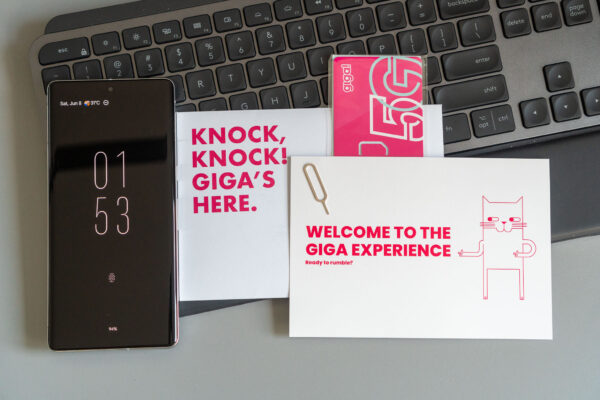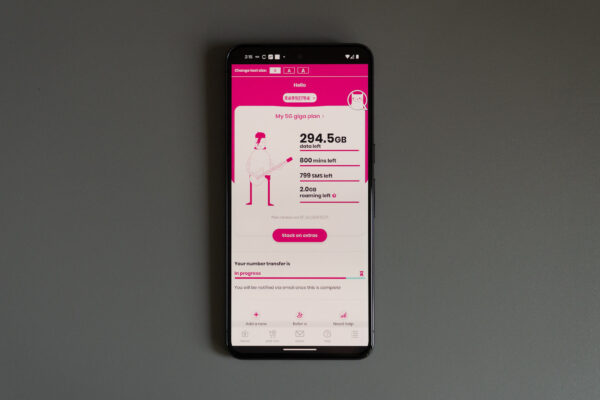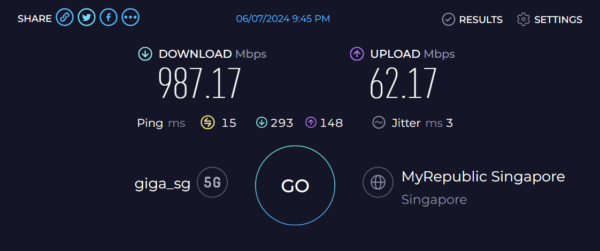
With the recent debut of yet another virtual telco, Eight, I got caught up in the frenzy of new promotions from all the other telcos. Well, mainly the virtual ones, MVNOs, like Giga and GOMO. The competition is quite hot.
MVNOs have helped drive Singapore’s telco plans to one of the lowest in the world. That’s good for us, since many of us are such heavy consumers of mobile data. I pay, what I think is an acceptable price, for a plan that comes with so much data that I couldn’t possibly finish.
But we’re always greedy, and if there’s something better that comes along, why not check it out? Last week, my existing telco GOMO sent me a promo. They have a $25.46 plan that now comes with 200 GB of data, 1000 mins, and 1000 SMSes, and for the first 12 months, it’ll include an extra 200 GB of data, and 5 GB roaming to Malaysia, Indonesia, and Thailand. Nice!
Of course, it intrigued me enough to survey the offers from Eight, Giga, and Simba. I’m not unfamiliar with Giga. In fact, I came from Giga before GOMO, and my kids’ plans are still all on Giga. Let me skip the details about comparing between plans and just get on to the reasons for my renewed interest with Giga.
- The $18.33 plan was pretty decent: 200 GB data, 800 mins, 800 SMSes, and 2 GB of roaming to Malaysia, Indonesia, and Thailand. 2 GB isn’t much but it’s “alright” for, say, short trips once a month. Also, the roaming is a base feature of the plan, not a 12-month promo like it is with GOMO.
- I’ll be honest, I dislike GOMO’s mobile app. They have no concept of being “logged in”. Using the app either requires you to get off Wi-Fi, or use an OTP. Giga’s app, on the other hand, is decent.
So, I switched to Giga. I’ll just make a quick mention that I was also quite put-off by GOMO’s illogical “security processes” and somewhat useless customer service when I sought help on a discrepancy I found with their promo. (They have yet to get back to me.)
Just to be clear, I want 5G. The main point of this post is to talk about 5G, so let me get on with that now. I returned to Giga, and I have some comparisons between Giga’s and GOMO’s 5G services.

There’s quite a big difference between Giga’s 5G and GOMO’s 5G. It’s got to do with whether you get 5G SA or 5G NSA service, or both. Let me explain SA and NSA:
- SA, or Standalone, is one of the two primary deployment models for 5G. As the name implies, this is a completely independent standalone network infrastructure that is entirely 5G. For telcos, it means they have to build out new infrastructure, rather than leveraging on its current 4G network. SA offers features such as lower latency, better performance, improved security, and being more futureproof.
- NSA, or Non-Standalone, is the other deployment model for 5G. Unlike SA, NSA leverages on existing 4G infrastructure but uses 5G radio access technology to deliver 5G service. NSA enables telco to rollout 5G services more quickly and more cost-effectively, and while it offers better performance and experience than 4G, it is not as good as SA.
NSA enables telcos to quickly add 5G service to their network without too much additional infrastructure investment and build out. SA is more futureproof, but requires a new infrastructure, thus taking more time and more money to build out.
Both SingTel and StarHub, the real telcos that build the infrastructure that GOMO and Giga respectively rely on, offer both 5G NSA and SA. However, interestingly, GOMO offers only 5G NSA service, and Giga offers only 5G SA service. It sounds like the parent companies use SA and NSA to create differentiated products for their MVNOs.
Does this mean Giga’s 5G is better? Well, it is more futureproof, but unfortunately, its coverage is spotty. I made this interesting discovery. SingTel, StarHub, and M1, often band together to share the same Common Antenna System (CAS) especially within indoor spaces. So in buildings where CAS is used, my Giga and GOMO service on 4G would have pretty much identical signal coverage and signal strength.
In fact, GOMO’s 5G, being NSA, simply rides on the existing CAS. So I can see, GOMO’s 5G has pretty much identical signal coverage and strength as compared with Giga’s 4G. With 5G on and SA support on, my Giga service gets much poorer signal coverage and strength. The moment I disable SA support, my Giga falls back to 4G mode, and then I get the same signal coverage and strength as GOMO’s 5G.
This tells me that StarHub’s 5G SA network doesn’t yet have quite that great coverage. In fact, I rarely get great signal strength. You can get great 5G service at the right places, and amazing (download) speeds. For example, I got 987 Mbps download testing with my tablet at Plaza Singapura with full signal strength.

That’s pretty much like a wired Gigabit Ethernet connection, so I’m quite impressed.
At other locations, with signal half as strong, I might pull off about 300 to 500 Mbps, which I think is still pretty good. There are also many places, particularly indoors, where the 5G SA signal is poor enough that speeds drop to low 2-digit range, or non-existent that you’d just fallback to 4G service, which would have good signal strength. This particular spot I’m at in my house right now, for example, will only get 4G from Giga.
I could not get GOMO 5G to do speeds anywhere as great as the best that Giga 5G can do. In recent history, my best GOMO 5G download tested at 388 Mbps. While my testing is casual at best, I think there is some anecdotal support that Giga’s 5G SA can be better than GOMO’s 5G NSA.
However, realistically, Giga’s 5G SA coverage is spotty enough that, on average, I think GOMO’s 5G might work better.
From a technologist standpoint, however, I like Giga’s 5G SA. I need to wait for StarHub to roll out more 5G SA base stations. Or, perhaps, StarHub should just let Giga use their 5G NSA together with 5G SA.
Great test works, Thanks
Have you got a chance to look into eight? It seems to piggy back on StarHub backbone.
I am currently on GOMO but I think they don’t appreciate existing customer. I am still paying $18 with their 4G basic plan which they are offering $15 for new customers and with roaming 2GB free to some countries.